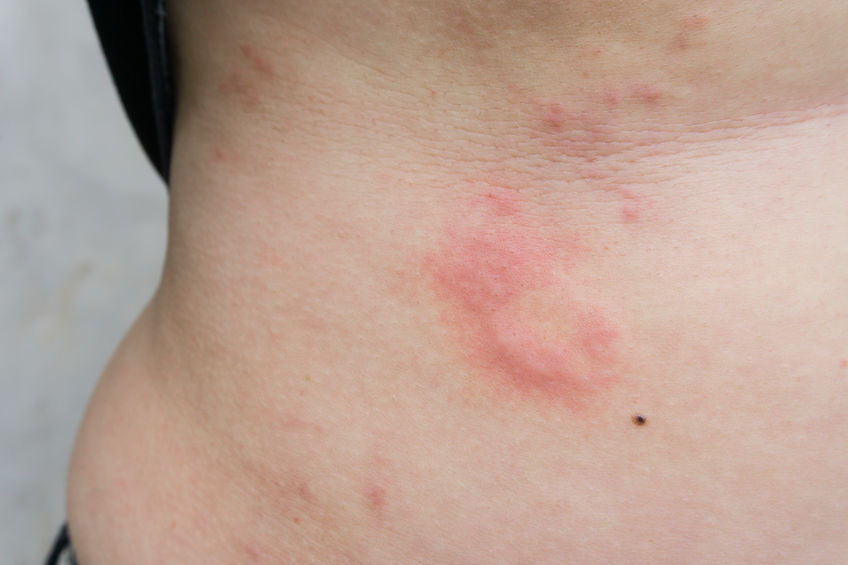It’s so debilitating, knowing you have an unsightly, irritating rash and not knowing what causes it. From the appearance of mine – overall it looks very red, though it is made up of pale lumps, surrounded by a red ring, or halo – it is a dead ringer for hives (according to the ‘Great God’ Google). There are around sixty possible causes of skin rash (OK, strictly speaking, 57 according to this article), so it’s not always that easy to tell what yours is. My doctor referred me to a dermatologist who confirmed it is hives, so at least I have a diagnosis.
Why me?
Now the riddle begins – how to find out why it arrived on my skin, an unwelcome visitor sent to drive me mad, every day. Hives do not just pop up out of the blue, though it can feel like that. There are very many causes, or triggers, and apparently, very many people with hives just battle on, never knowing what their triggers are. Some medications, too much sun, too much cold, water, types of food, insect stings…common, everyday things that everyone has in their environment and takes for granted, can cause hives. For example, the most common causes of hives in food are chocolate, nuts, fish, tomatoes, dairy (milk and eggs) and fresh berries.
Nettle rash
The official name for hives is urticaria, also sometimes called nettle rash. You’ll know why if you ever fell in a nettle patch. You get a tingly, sore feeling and you have raised red ‘weals’ or lesions on your skin. With nettles though, you know it won’t last long (though I’m still not sure if rubbing it with a dock leaf makes any difference!), but with hives you don’t know how long the rash will remain.

Allergy triggers
Here’s the medical bit – acute hives lasts up to six weeks. Chronic hives lasts longer than that. It can disappear and reappear, sometimes for years. There are many different causes of hives and different types. My hives was acute, and turns out it was caused by tomatoes. Well tomatoes lurk in lots of things, they’re not just red fruits (yep, a tomato is a fruit, not a vegetable!), that you slice up and put on sandwiches or in salads. They’re also on pizzas, in pasta sauces, in cottage and shepherd’s pies, in salsa… yadda yadda and so on and so forth. And I love tomato ketchup, so it went on pretty much everything. And because it’s in so many things, my personal ‘trigger’ was hard to pin down.
Keep a diary
This is where a diary comes in. Take my advice if you are plagued with a rash that is itchy, looks awful and feels worse. Keep a record of where you go. (Was it hot? Cold? Dry or wet?), and of what happens. (Did anything sting you? Were you in a good or a bad mood? What time of year was it? – some rashes get worse at different times of the year). What did you eat? (And you need to make a note of every ingredient or additive that is in whatever you eat). Be vigilant at the supermarket – read the small print before you buy. It’s not easy to be that methodical but you need to do it to even hope to find out what is causing your hives.

A health tracker phone app
An easy way to keep a record is to get a medically approved and efficient health tracker app on your phone, like AlliApp. This lets you input all information about what you eat, what you do and where you go – and it collates this information to throw up your potential allergy or food intolerance triggers. I found it to be the best and most easy way to work out what was causing my hives. Now I just need to avoid tomatoes. If my hives comes back – and hopefully they never will – I’ll start the detective work again, to identify what is causing them. Sometimes we need to help ourselves back to better health. For me it’s been a mystery, followed by a miracle. My skin is clear again and I am so grateful that I found out what caused my hives and was able to get rid of them.




